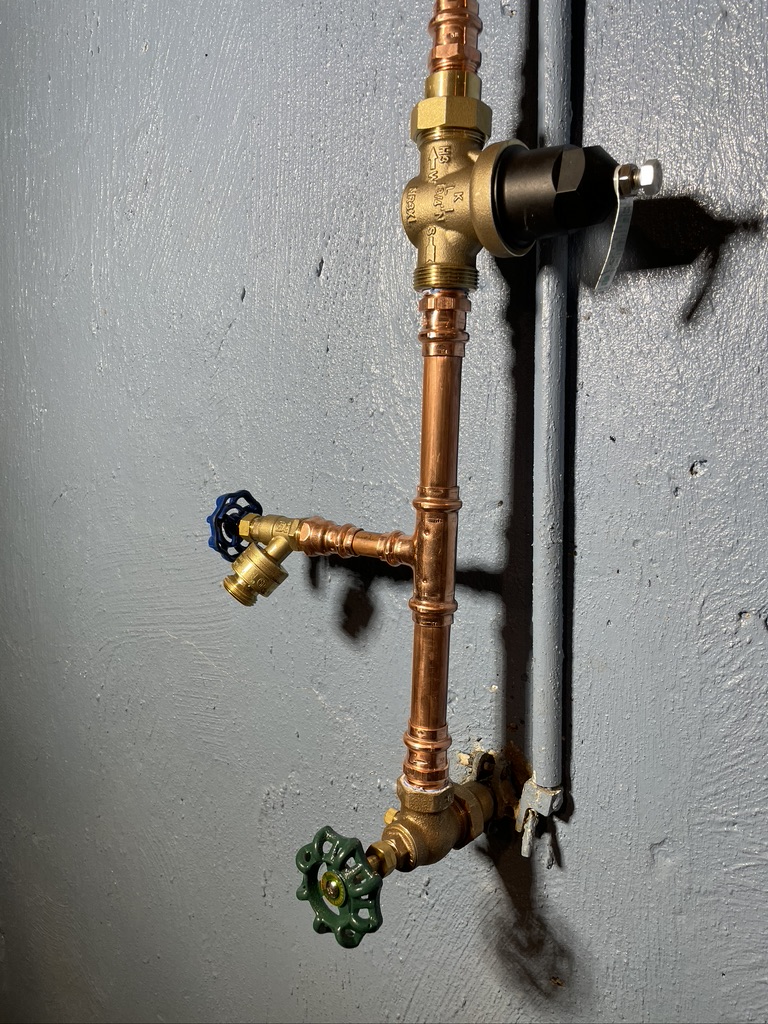Pressure Reducing Valve (PRV): A Key Component for Your Water Heater’s Hassle-Free Longevity and Efficiency
A well-functioning Pressure Reducing Valve (PRV) plays a pivotal role in maintaining the efficiency and longevity of your water heater. This vital device ensures that your home’s water pressure stays within the safe range, specifically below the limit of 80 psi.
While water heater manufacturers typically recommend a pressure range between 50 and 60 psi, at KC Water Heaters, we calibrate our PRVs to 68 psi. This setting strikes an optimal balance for efficient water flow and pressure management, while also discouraging any over-adjustments that could cause the PRV to fail in protecting the system.
The importance of a PRV becomes even more pronounced in areas with high or inconsistent water pressure levels. By reliably controlling the water pressure, a PRV prevents potential damage to your plumbing system and substantially contributes to your water heater’s hassle-free operation and extended lifespan.
In regions with high or fluctuating water pressure, a properly set PRV ensures consistent, regulated pressure that optimizes your water heater’s performance and durability. Recognizing the crucial role of a PRV is the first step in ensuring the smooth operation of your water heater and prolonging the life of your home’s plumbing system.
Checking Your PRV
Assessing the performance of your PRV involves a simple test using a water pressure gauge. Let the water flow for about 10 seconds to release any excess pressure from thermal expansion, then check the gauge.

What Happens When a PRV Fails?
Like any mechanical device, PRVs have a lifespan and typically last around 15 years before needing replacement. A failing PRV can manifest in three ways:
- It may cease to regulate water pressure, allowing the city’s full pressure into your home and potentially overloading your water heater.
- It may restrict water volume, leading to inadequate water flow throughout your house, affecting both your plumbing and your water heater’s performance.
- It could obstruct water from exiting your home, leading to excessive pressure due to thermal expansion, which can stress your water heater and other plumbing components.
While the third issue is less common, it can cause significant damage, including causing your water heater’s Pressure Relief valve to drip, indicating a potentially clogged PRV.
When to call a Plumber
If your PRV isn’t functioning correctly, immediate inspection and necessary replacement are recommended. A malfunctioning PRV can lead to dangerously high water pressure, potentially causing severe damage to your plumbing system, including leaks and burst pipes, and stressing your water heater.
When installing a new water heater, it’s wise to fit a new PRV. This ensures optimal water pressure control and reduces the risk of damage to your new appliance. Also, remember that a thermal expansion tank should be set to the exact water pressure, further underlining the importance of a functional PRV.
Don’t hesitate to contact a licensed plumber specializing in water heaters to verify your PRV’s functionality, and to ensure your home’s water pressure and thus your expansion tank and PRV are properly calibrated.

